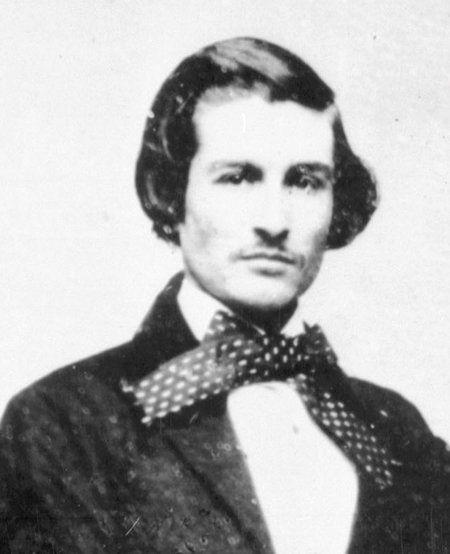THE CARRILLO RANCH operations included the raising of cattle, sheep, horses, pigs, and goats. Crops of wheat, barley, and hay supplemented the ranching efforts. Vicenta's brand is seen at the left.
 An estimated 250,000 travelers, emigrants, stage passengers, and native peoples passed through this property during the 19th century. It was in part this commercial opportunity that brought the Carrillos to this location where their plans included a trading post along with the prospects of the coming stage station and mail station. An estimated 250,000 travelers, emigrants, stage passengers, and native peoples passed through this property during the 19th century. It was in part this commercial opportunity that brought the Carrillos to this location where their plans included a trading post along with the prospects of the coming stage station and mail station.
As the first well-watered valley and stop after crossing the great deserts, and because of its convenient location at a fork in the road between San Diego and Los Angeles on the Southern Emigrant Trail, Vicenta sought and received a contract with John Butterfield to operate the Carrillo Ranch as a "swing station" on his Overland Mail stage route in 1858. Passengers were able to disembark to stretch their legs, relieve themselves, and enjoy a bit of sustenance at the long table in the sala, which was typically a meal of beans, tortillas, and beef or mutton, while the team of horses was changed. Meals were not included in the passenger's fare, and provided the Carrillos with additional income averaging about $1 per meal served.
As a crucial part of the mail route, Ramón Carrillo applied for and received the position of postmaster in 1859.
The trading post was operated by Vicenta's eldest son, José Antonio Yorba (seen at the right), who was educated at Boston College and learned the trade at his father's side in Santa Ana. In 1859 and 1860, he was sued in the San Diego Court of Sessions for selling "spirituous liquors by the glass" and merchandise without a license. Yorba seemed unaware that he needed legal permission, which may have been the practice he was accustomed to during the Mexican era. At any rate, a stiff drink after crossing the Overland trail would have likely have been appreciated by many. |

